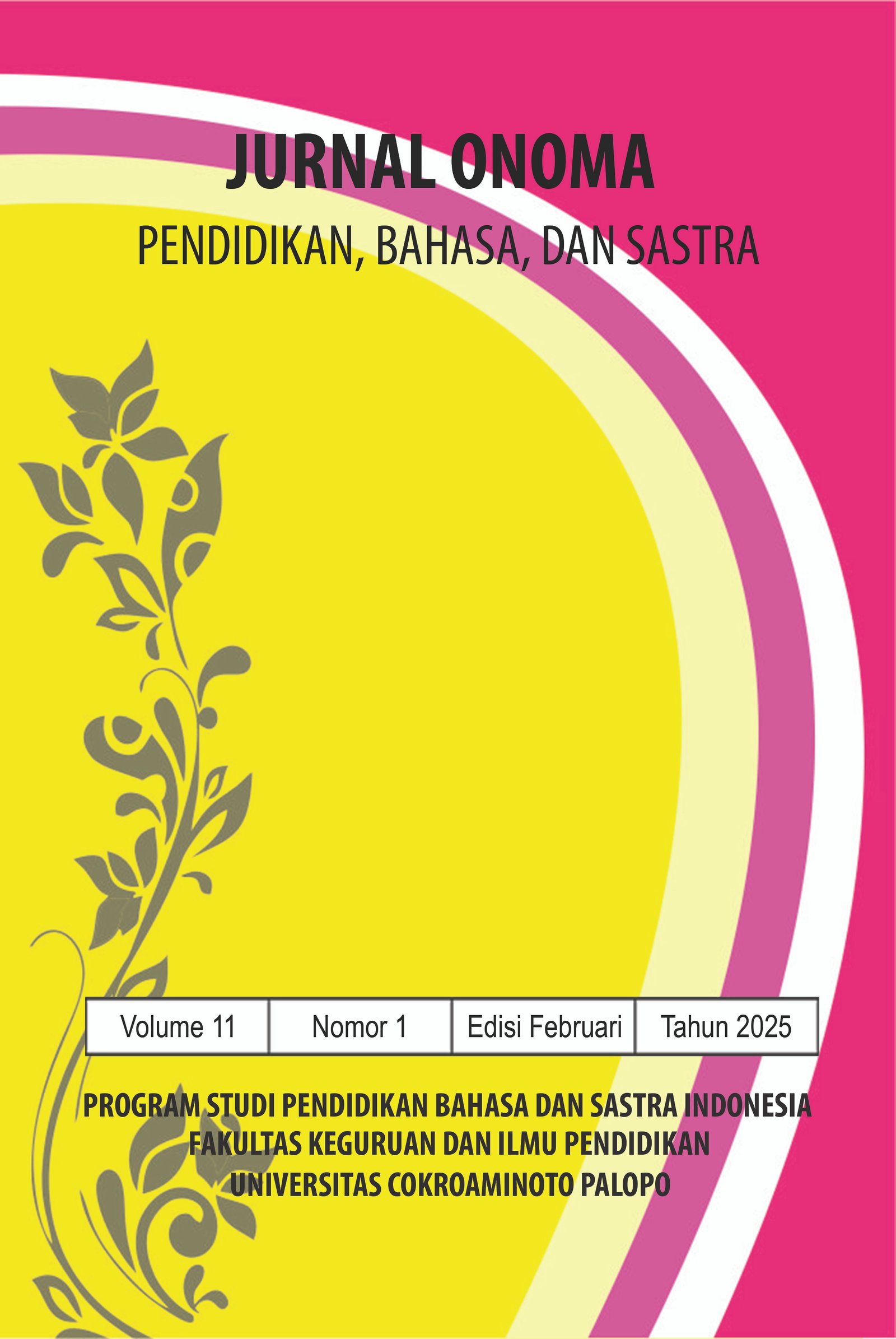Translanguaging Phenomenon In Bilingual People Based On Gita Savitri Youtube Channel
https://doi.org/10.30605/onoma.v11i1.5431
Keywords:
Sociolinguistic, Bilingualism, Translanguaging, YoutubeAbstract
This study focuses on the functions and concepts of translanguaging contained in Gita Savitri Youtube videos. The aims of this study was to find, classify, and analyze the translanguaging functions contained in Gita Savitri ‘Beropini’ videos. The witer used the theory of Jakobson (2001) to identify and analyze the type of translanguaging functions contained in the videos. In addition, the writer also used Wei theory (2017) to identify and analyze the concepts of translanguaging contained in the videos. The writer used descriptive qualitative method to analyze the data while the data were taken from Gita's utterances in both 'Beropini' videos. From the results of this study, the writer found that there were 29 Gita utterances contained translanguaging functions and translanguaging concepts that have been analyzed by the writer. In both videos, the writer only found 3 of the 6 translanguaging functions, namely expressive function, directive function, and referential function. In addition, the writer also found all the concepts of translanguaging that Wei (2017) stated which are translanguaging space and translanguaging instinct.
Downloads
References
Alimin, A. Ramaniar, Ety (2020). Sosiolinguistik Dalam Pengajaran Bahasa. Pontianak: Putra Praboyo Perkasa.
Bogdan, R.C., &. Biklen, S.K. (1982). Qualitative research for education, an introduction to theories and method.
Pearson. Chaer, Abdul (2014). Linguistik Umum. Jakarta: Rineka Cipta.
Creswell, J. W, & Creswell, J. D. (2017). Research design : Qualitative, Quantitative, and Mixed Methods Approaches. . California: Sage Publications.
Holmes, J. (2001). An Introduction to Sociolinguistics (2nd ed.). New York: Routledge.
Holmes, J. (2013). An introduction to sociolinguistics (4th ed.). London and New York: Routledge Taylor and Francis Group. DOI: https://doi.org/10.4324/9781315833057
Jakobson, R. (1960). Closing Statement : Linguistics and Poetics. The MIT. Jakobson, R. (1995). On Language . Cambridge: Harvard University Press.
Kalangit, R.F. (2016). Alih Kode Dalam Instagram (Suatu Analisis- Sosiolinguistik). Universitas Sam Ratulangi.
Lanigan, R.L.(1991). Roman Jakobson's semiotics theory of communication. Georgia: Southern Illinois University.
Makale la (2015). Translanguagingas a vechile for epistemic access : Cases forreading comprehension and multilingual interanctions. Per Linguam. DOI: https://doi.org/10.5785/31-1-628
Sugiyono, P.D. (2020). Metode penelitian Kualitatif Untuk Penelitian Yang Bersifat : Eksploriatif, Enterpretif Dan Konstruktif. Bandung : Alfabe
Garcia,Wei. (2014).Translanguaging:Language, Bilingualism,and Education. New York: Palgrave Macmillan. DOI: https://doi.org/10.1057/9781137385765_4
Wei, L. (2014). 'Who's Teaching Whom? Co- Learning in Multilingual
Classroom'sin S. May (ed.) The Multilingual Turn : Implications for SLA, TESOL, and Bilingual Education. New York: Routledge.
Wei, L. (2016). Multi competence and the translanguaging instinct. In V. Cook &
W. Li (Eds), The Cambridge handbook of multi competence . Cambridge: Cambrudge University.
Wei, L. (2017). Translanguaging as a Practical Theory of Language. Applied Linguistcs DOI: https://doi.org/10.1093/applin/amx044
Downloads
Published
How to Cite
License
In submitting the manuscript to the journal, the authors certify that:
- They are authorized by their co-authors to enter into these arrangements.
- The work described has not been formally published before, except in the form of an abstract or as part of a published lecture, review, thesis, or overlay journal.
- That it is not under consideration for publication elsewhere,
- That its publication has been approved by all the author(s) and by the responsible authorities – tacitly or explicitly – of the institutes where the work has been carried out.
- They secure the right to reproduce any material that has already been published or copyrighted elsewhere.
- They agree to the following license and copyright agreement.
License and Copyright Agreement
Authors who publish with Onoma Journal: Education, Languages??, and Literature agree to the following terms:
- Authors retain copyright and grant the journal right of first publication with the work simultaneously licensed under Creative Commons Attribution License (CC BY 4.0) that allows others to share the work with an acknowledgment of the work's authorship and initial publication in this journal.
- Authors are able to enter into separate, additional contractual arrangements for the non-exclusive distribution of the journal's published version of the work (e.g., post it to an institutional repository or publish it in a book), with an acknowledgment of its initial publication in this journal.
- Authors are permitted and encouraged to post their work online (e.g., in institutional repositories or on their website) prior to and during the submission process, as it can lead to productive exchanges, as well as earlier and greater citation of published work.

















